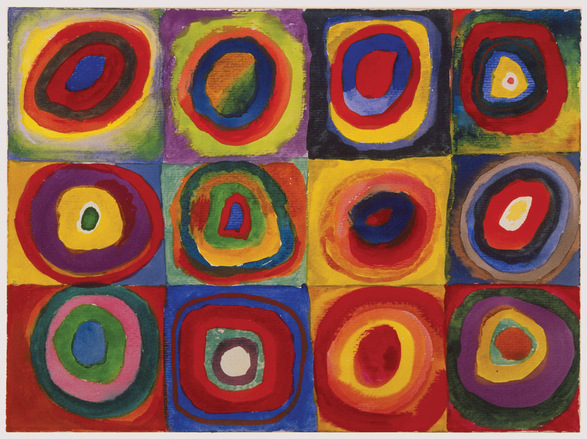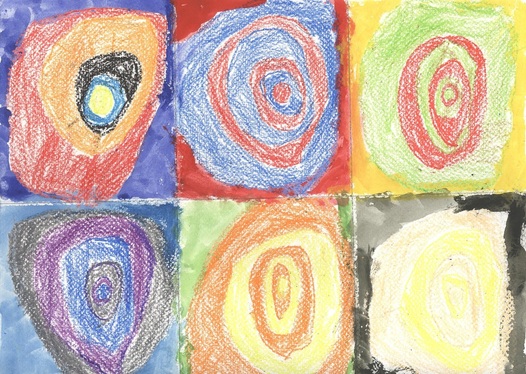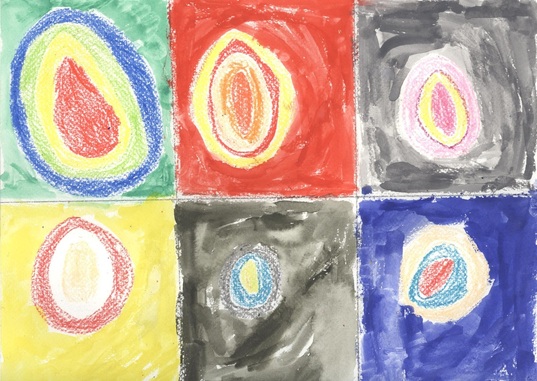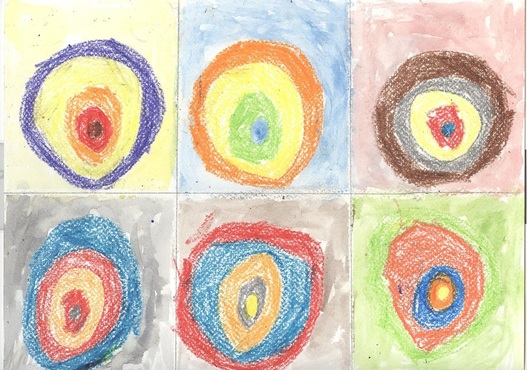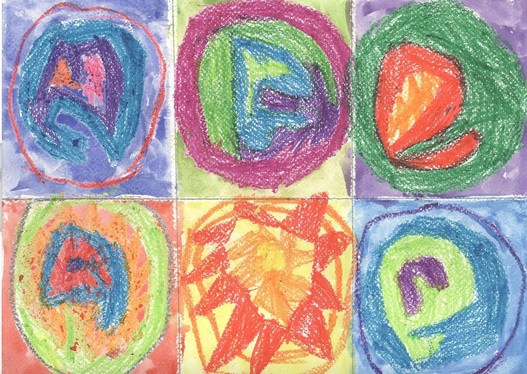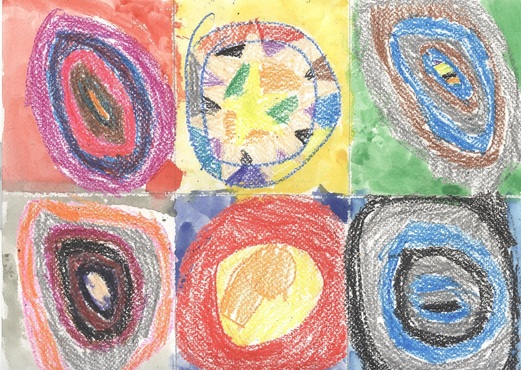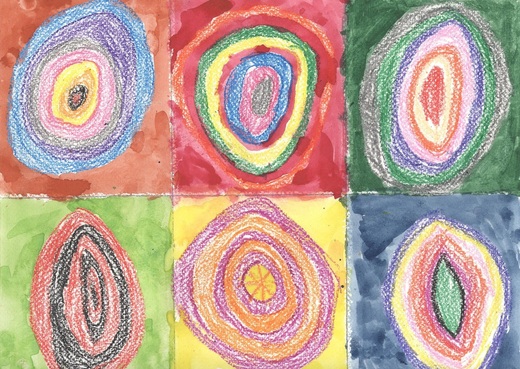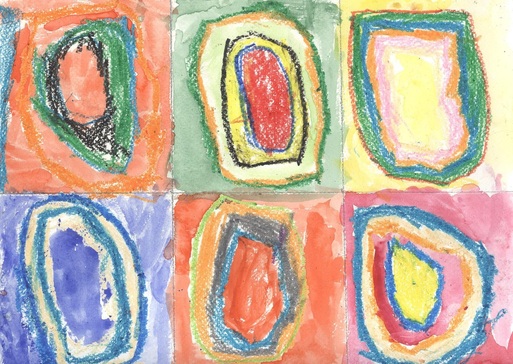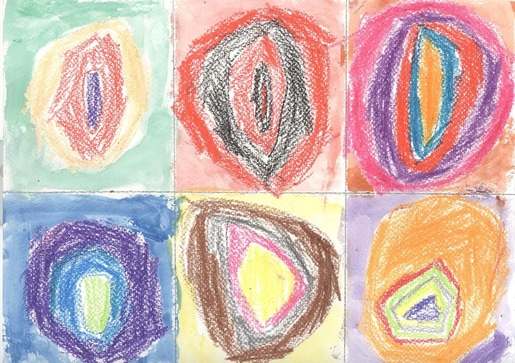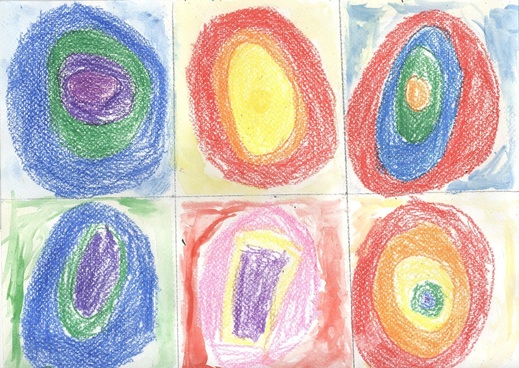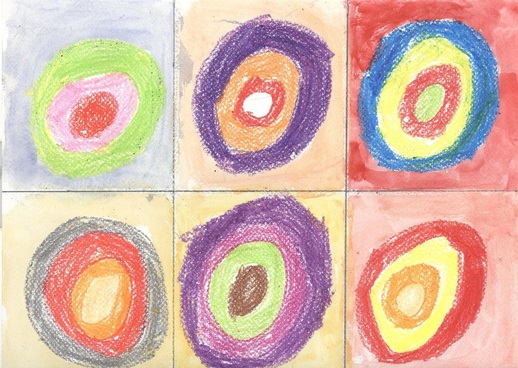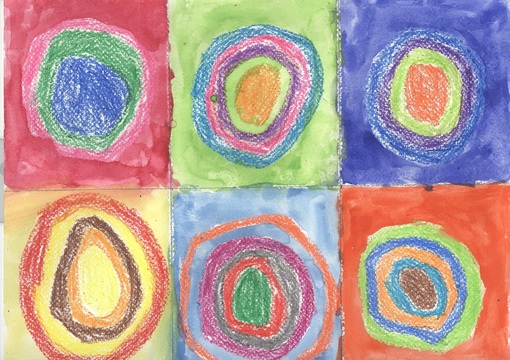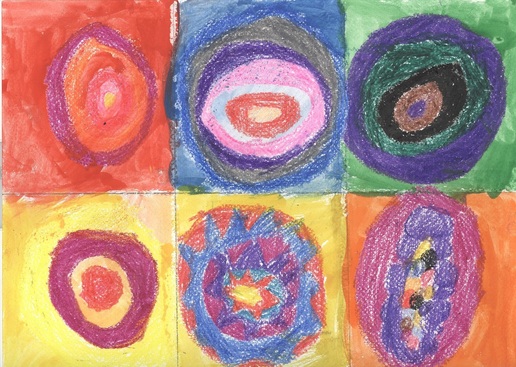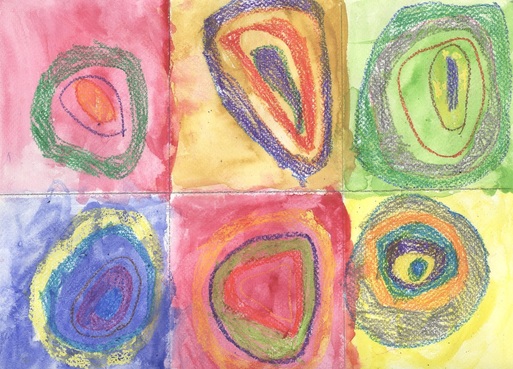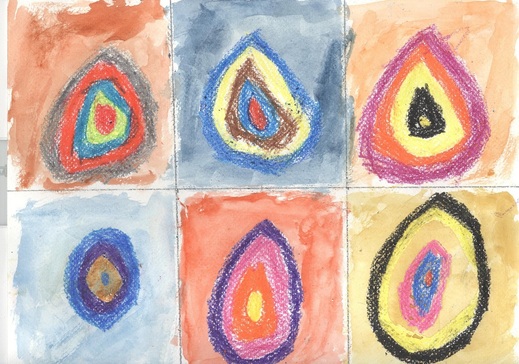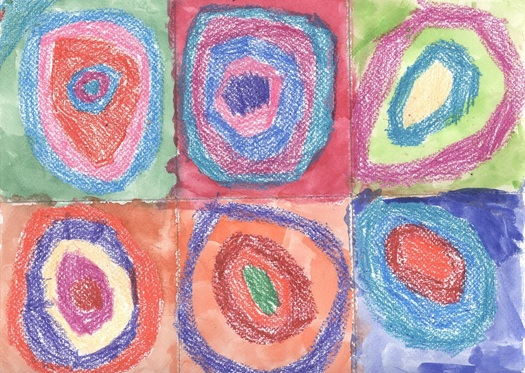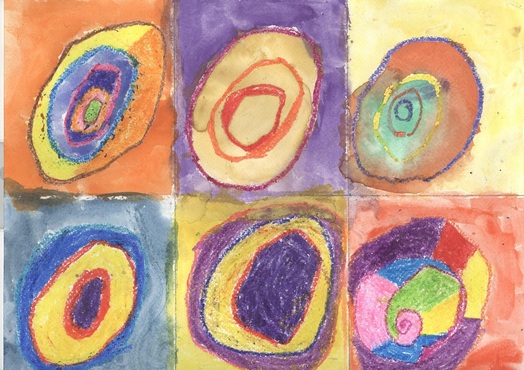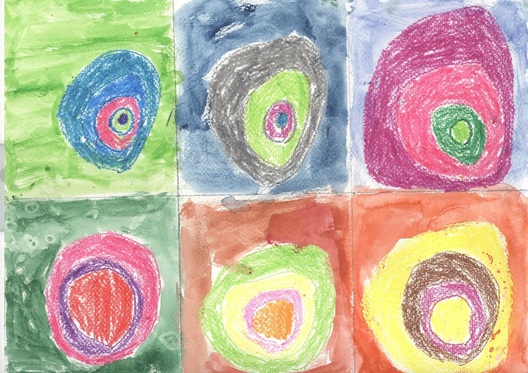Student Paintings Inspired by Wassily Kandinsky
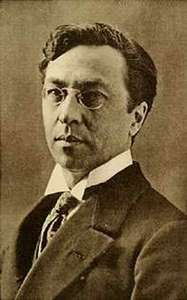
Wassily Kandinsky, circa 1912
While studying 2-D geometry, we did a study of Wassily Kandinsky's artwork. Kandinsky is often considered the "father of abstract art," and the students studied Kandinsky's progression from realistic art to impressionist art, and finally to abstract art. Much of Kandinsky's abstract art relies on shape and color, so the students analyzed his use of shape while using appropriate geometry vocabulary. The students also studied basic color theory, looking at Kandinsky's use of primary, secondary, and tertiary colors, analogous colors, and opposite colors. Finally, the students analyzed one of Kandinsky's abstract paintings, Farbstudie Quadrate (Circles in Squares, 1913.) The students discussed congruent versus similar shapes. Since Kandinsky felt that his paintings were visible expressions of music, the students discussed what each square of the painting would sound like musically. Then the students created their own versions of Farbstudie Quadrate, paying particular attention to their use of color and shape.
Wassily Kandinsky, 1866-1944
Kandinsky grew up in Odessa (Ukraine) as part of a very musical family. He learned to play the cello and piano as a boy, and later become a lawyer and professor. In 1895, he saw the impressionist painting Haystacks by Claude Monet. Kandinsky didn’t like Monet’s painting. He didn’t think it was realistic enough. Afterwards, Kandinsky decided to go to an art school in Munich, Germany to learn to paint.
As Kandinsky started to paint, his ideas about art began to change. His early paintings were quite realistic. Then he moved to style similar to the impressionist painters. He started using color to show emotion rather than to make objects look real. Gradually, Kandinsky’s art became more abstract. He began to paint objects as patches of color. As he grew as an artist, his paintings became less realistic, until the viewer could not longer indentify the objects in his art.
Kandinsky was trying to create the same effect on a viewer as a piece of music has on a listener; he wanted the viewer to feel an idea without actually seeing it. Kandinsky said, “Color is the keyboard, the eyes are the harmonies, the soul is the piano with many strings. The artist is the hand that plays, touching one key or another, to cause vibrations in the soul.”
Kandinsky grew up in Odessa (Ukraine) as part of a very musical family. He learned to play the cello and piano as a boy, and later become a lawyer and professor. In 1895, he saw the impressionist painting Haystacks by Claude Monet. Kandinsky didn’t like Monet’s painting. He didn’t think it was realistic enough. Afterwards, Kandinsky decided to go to an art school in Munich, Germany to learn to paint.
As Kandinsky started to paint, his ideas about art began to change. His early paintings were quite realistic. Then he moved to style similar to the impressionist painters. He started using color to show emotion rather than to make objects look real. Gradually, Kandinsky’s art became more abstract. He began to paint objects as patches of color. As he grew as an artist, his paintings became less realistic, until the viewer could not longer indentify the objects in his art.
Kandinsky was trying to create the same effect on a viewer as a piece of music has on a listener; he wanted the viewer to feel an idea without actually seeing it. Kandinsky said, “Color is the keyboard, the eyes are the harmonies, the soul is the piano with many strings. The artist is the hand that plays, touching one key or another, to cause vibrations in the soul.”
